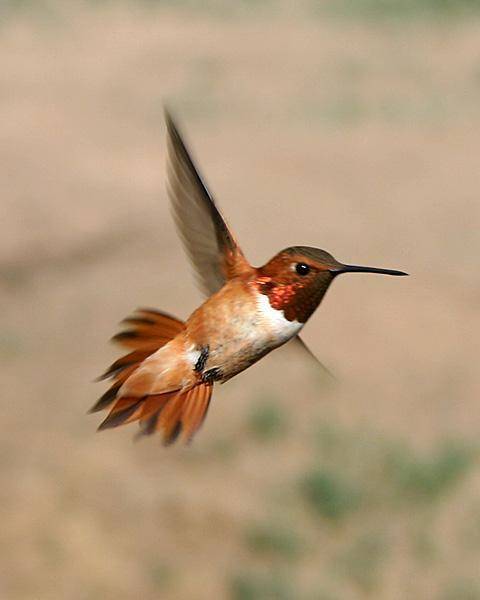DWR News Release
VERNAL — If you’ve been outside this summer, you’ve most likely witnessed a few hummingbirds eating at a feeder or visiting some other nectaring spot for a midday meal. If you want to see these incredible birds up close though, you should consider attending an upcoming Utah Division of Wildlife Resources event.
People typically see five different species of hummingbirds in Utah: black-chinned, broad-tailed, calliope, rufous and Costa’s. These are just a small glimpse of the 330 species that can be found in the Western Hemisphere. The most commonly seen species in Utah are the broad-tailed and black-chinned hummingbirds, but if you’re lucky, you can also attract North America’s smallest breeding and long distance migrant to your backyard — the calliope hummingbird. This bird weighs as much as a penny and can travel up to 5,600 miles throughout a single year.
The Utah Division of Wildlife Resources is partnering with Bureau of Land Management Biologist Terry Tolbert to host a hummingbird banding demonstration on Saturday, July 31 from 7 a.m. to 11 a.m. The free event will be held at the Red Canyon Lodge at 2450 Red Canyon Road in Dutch John.
During the event, the hummingbirds are captured and a small band is placed on its leg. These bands — little more than thick aluminum foil — are stamped with a unique number, giving each bird its own identification throughout its lifetime. The information gathered from the banding efforts helps biologists learn more about migration patterns and other crucial data about the birds.
“It’s a rare and unique opportunity to see Utah’s tiniest birds in hand, and watch biologists gather baseline data to determine strategies for conserving these birds, their habitat and future research needs,” DWR Regional Wildlife Recreation Specialist Anthony Christianson said. “The population status of many hummingbird species is unknown. These banding efforts help educate our local community and also help us collect regional information that may be crucial for making future management decisions.”
DWR biologists and staff will be available to explain the bird banding process and answer questions about hummingbirds during the event. Participants are encouraged to bring a camera to get pictures of the hummingbirds during the event. It’s also recommended to stop at the Red Canyon visitor center, as you may also see other species of birds and the bighorn sheep herd that resides near the Red Canyon overlook.
“At this location, we’re hoping to see and band rufous hummingbirds as they are migrating through Utah during their July migration from Canada and Alaska,” Christianson said. “Rufous hummingbirds can be found at these higher elevations and are some of the easiest to identify. They have a bright copper/orange color to them and can be found aggressively fighting over nectar resources, like Indian paintbrush and other local flowers. We’ll likely capture some broad-tailed and black-chinned hummingbirds during the event.”
While the event is free, space is limited, so participants should sign up in advance on Eventbrite.
“We don’t want to overwhelm the bander or the birds, so we tried to limit the groups that this area can accommodate,” Christianson said.
Attracting and feeding hummingbirds
Most hummingbirds migrate to warmer climates during the cold winter months and are a welcome sight when spring arrives. Feeding hummingbirds is fun for all ages and helps give a little extra boost to the high metabolisms of these world travelers. They are excellent pollinators and primarily feed on flower nectar, so planting native plants — like penstemon and bergamot — is a great way to attract them to your yard.
“They will also consume small insects and spiders for protein, so be aware of the chemicals you are spraying around your nectar sources,” Christianson said. “Many stores also sell a premade ‘red-dye’ feed, but be aware that may not be the healthiest solution for these birds. A simple 4-to-1 sugar and water solution in a traditional red colored feeder is often the more cost effective way to feed them and is better for the birds, overall.”
For more information about the upcoming event, call the DWR’s Northeastern Region office at (435) 781-9453.

